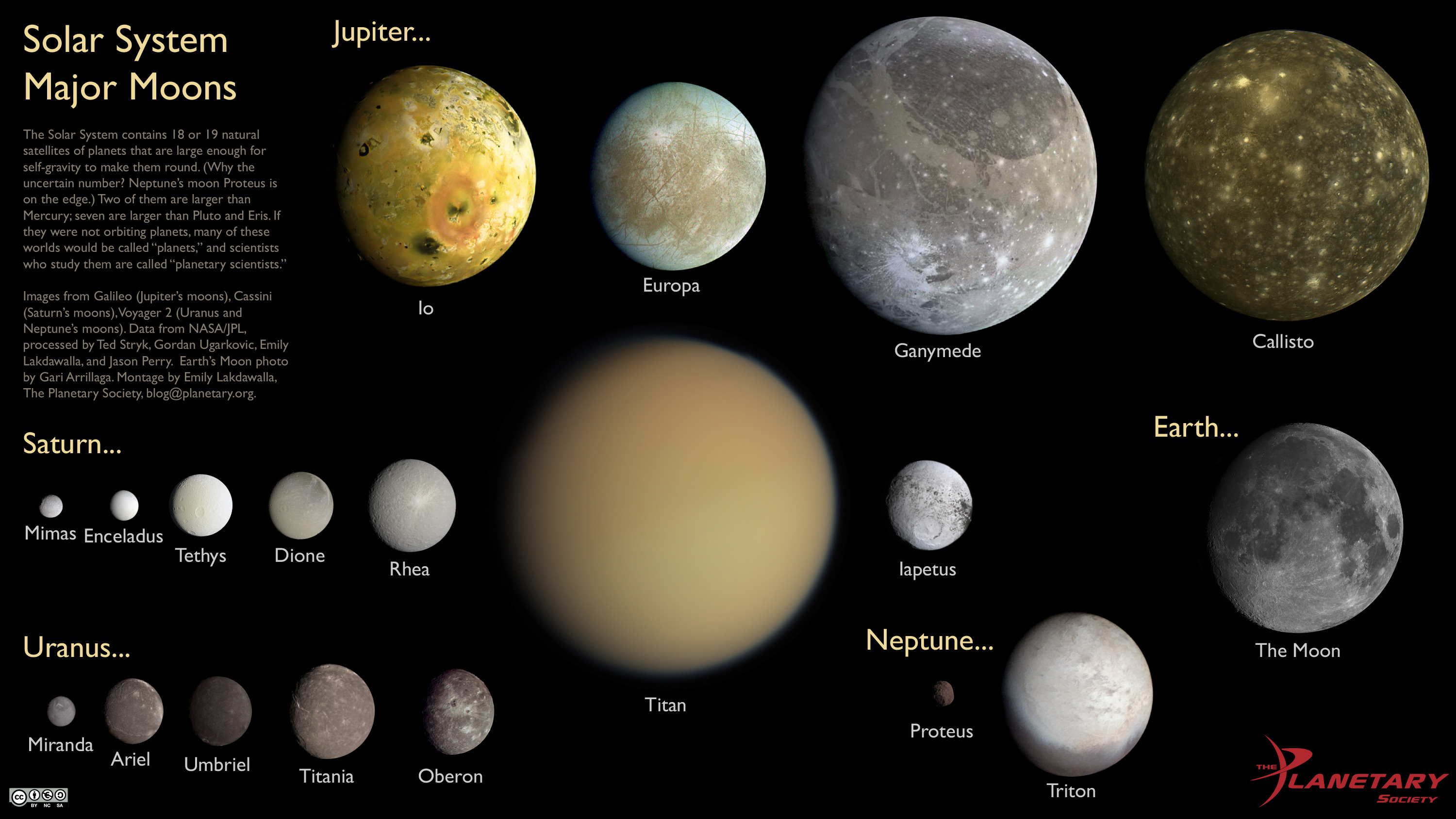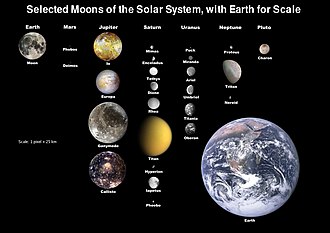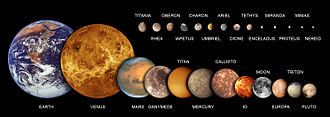what is the name of the largest natural satellite of the solar system?
Natural satellites are celestial bodies that orbit around a planet or another celestial body that is not a star. A natural satellite in astronomy is a smaller body which moves around a larger body.

The Solar System S Major Moons The Planetary Society
It is the ninth largest object in the solar system and the largest without a substantial atmosphere.

. Or you could order the planets by weight mass. All of these can be thought of as natural satellites. Wikimedia Commons via European Southern Observatory ESO The discovery of 51 Pegasi b in 1995 was one of the most important in space exploration history launching a whole new field in astronomical research.
Other bodies in the Solar System like Dwarf Planets and Asteroids also have Natural Satellites. Moons also known as natural satellites orbit planets and asteroids in our solar system. Which planet is the second largest.
As of July 2009 336 bodies have been formally classified as Moons. Ganymede followed by Titan Callisto Io and Earths Moon are the largest natural satellites in the Solar System see List of natural satellites List. Jupiter 18986 x 10 27 kilograms Saturn 56846 x 10 26 kg Neptune 10243 x 10 25 kg Uranus 86810 x 10 25 kg Earth 59736 x 10 24 kg Venus 48685 x 10 24 kg Mars 64185 x 10 23 kg and Mercury 33022 x 10 23 kg.
Ganymede is a moon of Jupiter and the largest natural satellite in the solar system. Saturn is the sixth planet from the Sun and the second largest planet in our solar system. Which is the largest natural satellite in our solar system.
The satellite is considered to be the most active body after Earth with volcanic activity. Lo is the fourth largest natural satellite of planet Jupiter as well as the fourth-largest moon with a diameter of 3643 km. Each Questions has four options followed by the right answer.
Other natural satellites in our Solar System Natural satellite Satellite of Orbital speed average The Moon Earth 10 kms Io Jupiter 1733 kms Europa Jupiter 1374 kms Ganymede Solar Systems largest moon Jupiter 1088 kms. IAU-listed dwarf planets are also known to have natural satellites. Earth has one moon and there are more than 200 moons in our solar system.
A natural satellite or moon is in the most common usage an astronomical body that orbits a planet or minor planet or sometimes another small Solar System body. Galileo Galilei discovered this satellite in 1610. The Moon has a very thin atmosphere called an exosphere.
Venus has no moons while Neptune has 14. The only planets in the Solar System that do not have natural satellites are Mercury and Venus. The term is used for moons which go around planets and it is also used for small galaxies which orbit larger galaxies.
224 rows The Solar Systems planets and its most likely dwarf planets are known to be. The Earth has 1 Satellite Mars has 2 Jupiter has 63 Saturn has 62 Uranus has 27 and Neptune has 13 Natural Satellites. The list of Biggest natural Satellite in the Solar System is discussed along with the facts like Average Diameter kilometres Orbits Distance to.
A team discovered a haul of 20 new moons orbiting the ringed planet bringing its total to 82. 51 Pegasi b was the first planet outside of our solar system discovered around a sun-like starSince its discovery 51 Pegasi b has picked two. Like the planets the names of the satellites in our system were taken from Greek.
Students can take a free test of the Multiple Choice Questions of The Earth in the Solar System. Its diameter of 5268 km is 041 times that of Earth 077 times that of Mars 102 times that of Saturns Titan Solar Systems second largest moon 108 times Mercurys 109 times. The Moons presence helps stabilize our planets wobble and moderate our climate.
The Moon is Earths only natural satellite and the fifth largest moon in the solar system. Pluto and some other dwarf planets as well as many asteroids also have small moons. The smaller body is held in orbit by gravitation.
Fourth Largest Satellite In Solar System. Ganymede is the largest and most massive moon in the Solar System. Its diameter of 5268 km is 041 times that of Earth 077 times that of Mars 102 times that of Saturns Titan Solar Systems second largest moon 108 times Mercurys 109 times.
Which is the first largest natural satellite of our solar system. Answer Jun 14 2020 by Samardeep Acharya. The Moons distance from Earth is about 240000 miles 385000km.
Download the Social Science Quiz Questions with Answers for Class 6 free Pdf and prepare to exam and help students understand the concept very well. Bodies which orbit planets are called moons. Pluto Haumea Makemake and Eris.
Then the list from most massive to least massive would be. Ganymede is one of Jupiters 79 known satellites. Most of the major planets all except Mercury and Venus have moons.
The first natural satellite known to man is the Moon. Jupiter by contrast has 79 natural satellites. All of these natural satellites are held in orbit by the attraction of gravity between the satellite and the object it is orbiting.
Our Solar System has eight official planets as well as millions of minor planets asteroids comets and other objects orbiting around the Sun. Ganymede is the largest and most massive moon in the Solar System.

List Of Biggest Natural Satellite In The Solar System

10 Biggest Moon In The Solar System Largest Moon Ganymede

Moons Size Comparison Natural Satellites In The Solar System Youtube

Natural Satellites Science Learning Hub




0 Response to "what is the name of the largest natural satellite of the solar system?"
Post a Comment